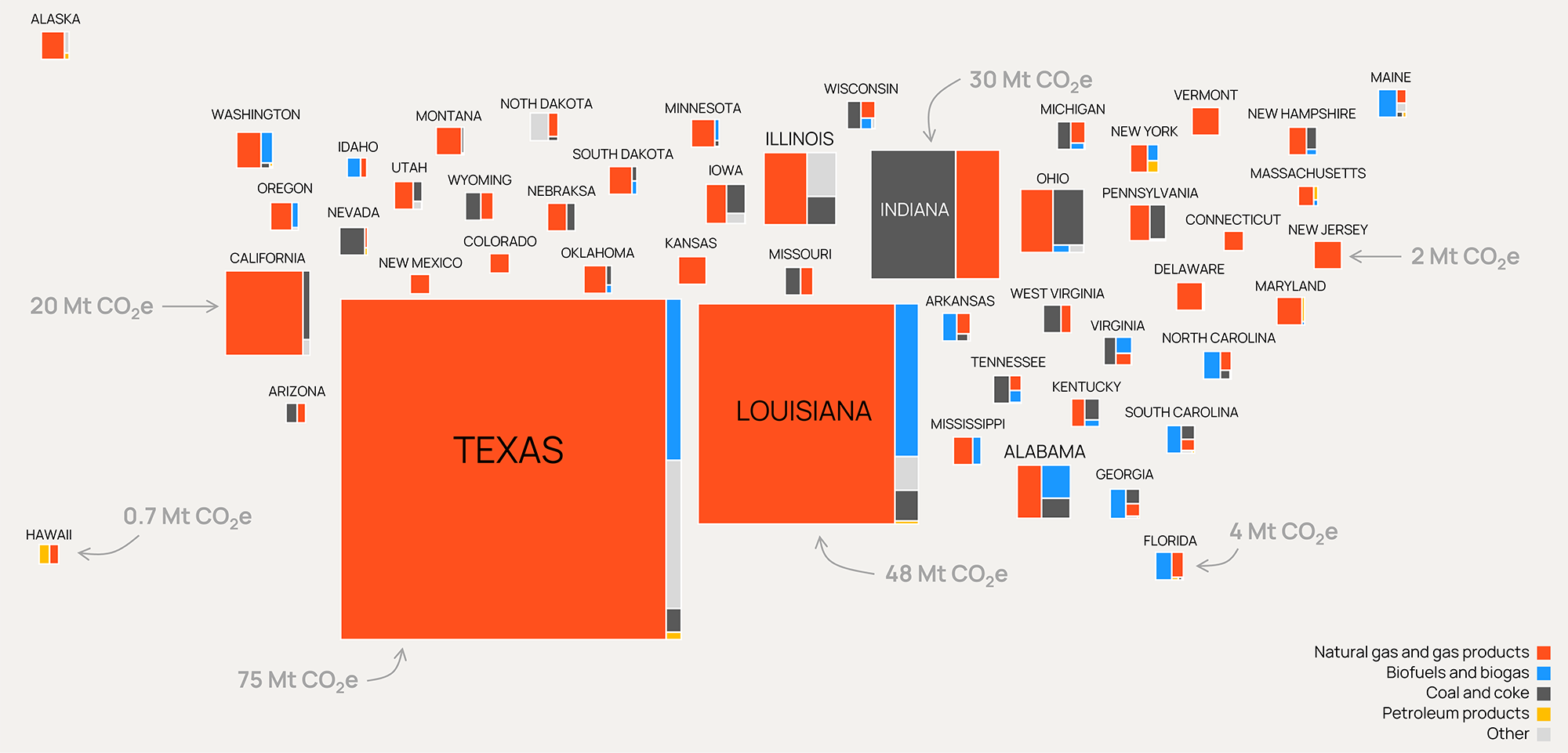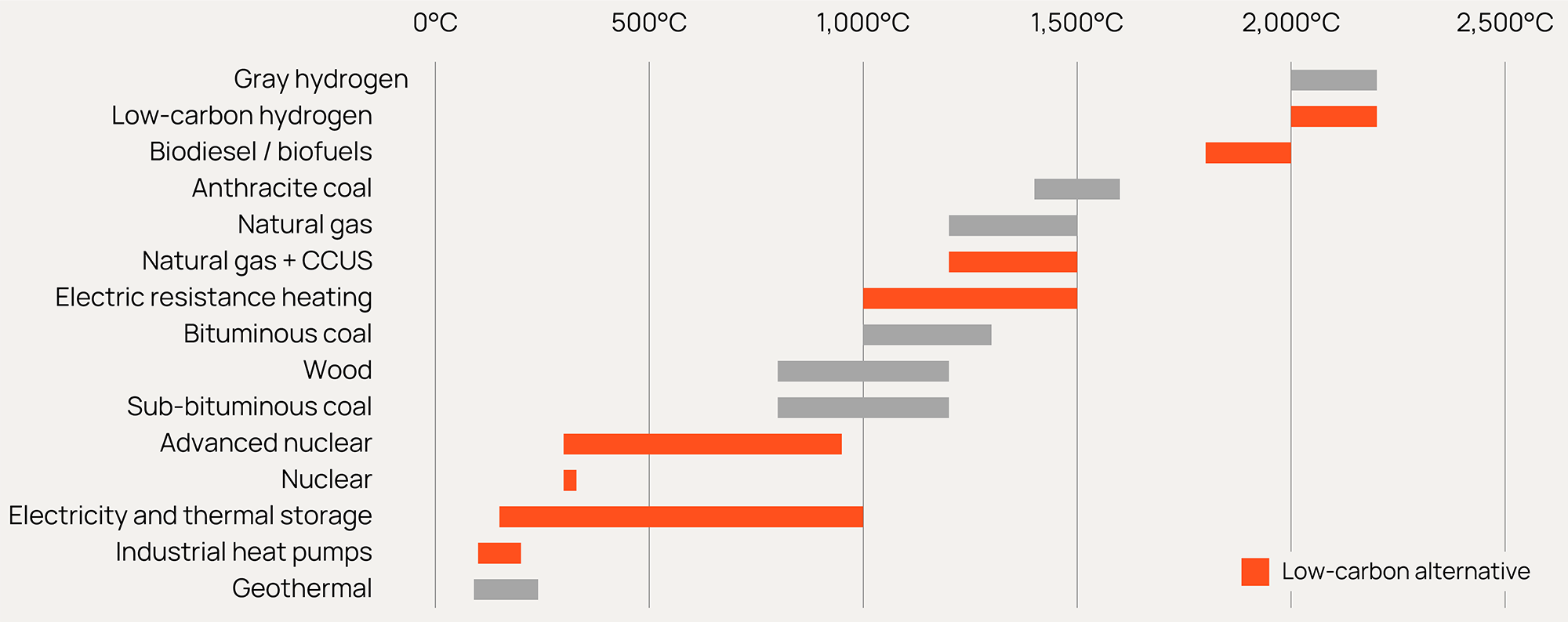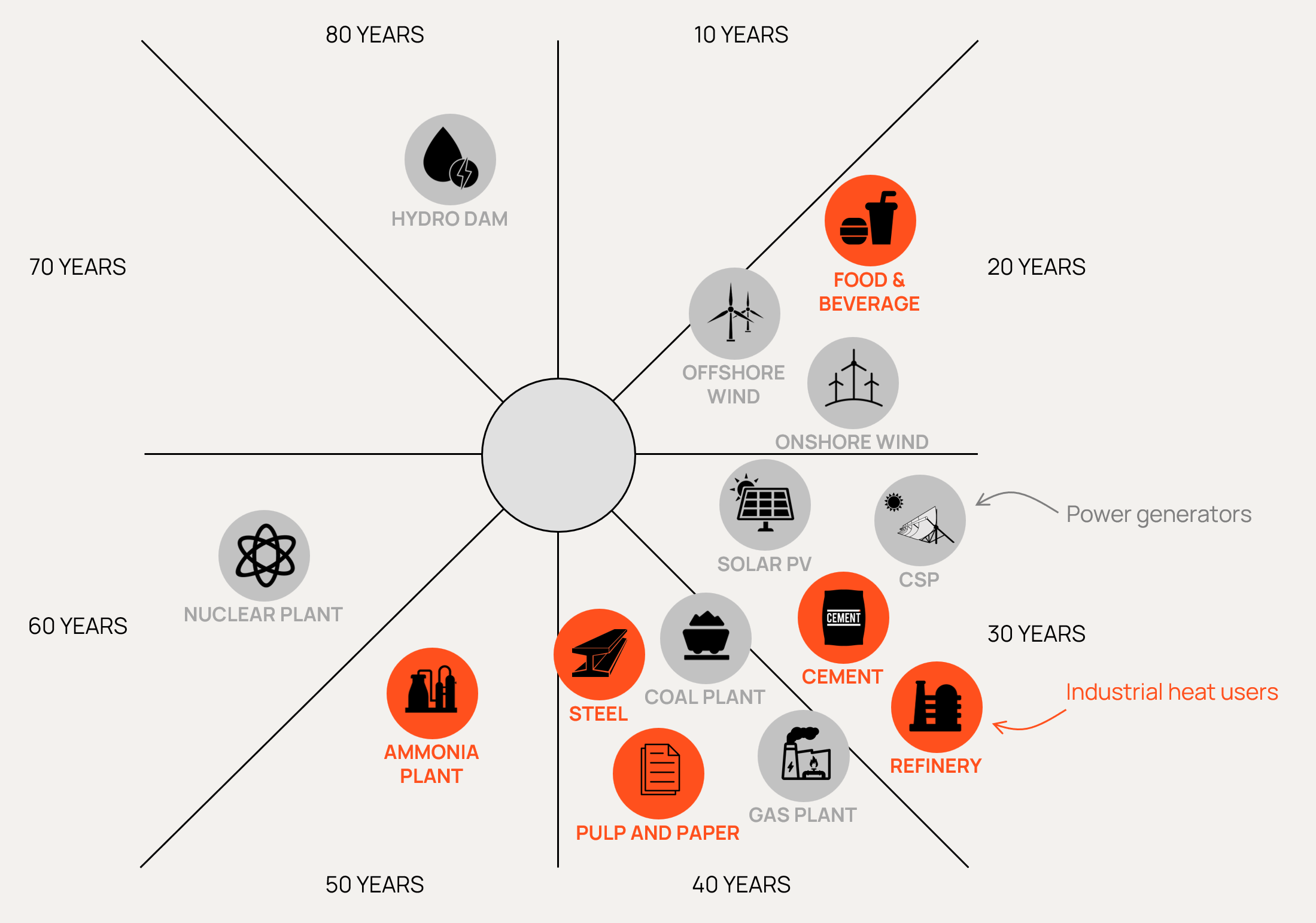By Aaron Foyer
VP, Orennia
Going back as far as the Bronze Age, most advanced civilizations recognized the potential of harnessing iron. Even before the strength and durability of high-strength low-alloy steel was understood, there was a strong desire to master iron for one simple reason: there’s an abundance of it. But for thousands of years, each enterprising civilization would run into the same roadblock: it’s really, really hard to melt iron. With a melting point of ~1,500°C, burning wood simply can’t get near the temperatures needed, even with ample airflow and the right conditions. Innovation was needed to unlock iron’s potential.
Around 1800 BCE, prior to the dawn of the Iron Age, metallurgists developed what are known as bloomeries. These furnaces, which look more like indie restaurant stone pizza ovens, reach temperatures up to 1,100°C. While not hot enough to fully melt iron, they could at least smelt the metal, allowing for the production of wrought iron.
The first true steel was developed in India around 300 BCE when engineers developed crucible furnaces able to create temperatures above iron’s melting point. Coming out of this process came wootz steel, in the running for the most beautiful metal alloy ever forged. The swirling, silvery waves in the metal were a trademark look, made famous as Damascus steel. Alexander the Great was gifted some wootz steel by King Porus following one of his victories as he rampaged across Persia.

But it’s not just the ancient kings of Babylon who care about heating technology. Some of today’s largest and most strategic industries require heat of various temperatures to melt, crack, distill, sterilize, dry, mold, sinter, carbonize, vulcanize, crystalize and steam. Heat in industry is where physics meets engineering at its most powerful. Known collectively as industrial heating, the process of using thermal energy for industry is no doubt one of the foundational building blocks of modern society. While it’s invisible to most, its impact on the environment is anything but.
So, given its strategic importance but environmental challenges, how are we getting on in decarbonizing industrial heat?
Background
To start, industrial heat is an umbrella term. It covers a wide range of functions by different industries using different supply chains and different infrastructure. Not to mention a huge range of temperatures. While melting iron is toward the upper end of the range used by industry, lower levels are used for everything from brewing beer to pulping paper.
To demarcate the types of heat being used, temperatures are categorized as low (below 130°C), mid (between 130°C and 500°C) and high (above 500°C). While there are more ways than a Kendrick diss track to create heat, today, it’s predominately made using fossil fuels.
On emissions: The central reason policy makers care about industrial heat is that the sector is responsible for more than 20% of global carbon dioxide emissions. In the US alone, an estimated 759 million tonnes of carbon dioxide come from industrial heating annually. For context, that would be more than all of Germany across all sectors, itself an industrial powerhouse.
US Industrial Heating Emissions by Sector, 2018

Of American industrial heat emissions, ~70% comes from iron and steelmaking, chemical manufacturing, refineries and cement, all which rely heavily on mid- and high-temperature heating. The food and beverage industry plus pulp and paper combined make up another ~10%, mostly from low-temperature heat.
Regionality: Big shocker here: industrial heat emissions are concentrated in industrial heartlands.
The industrial heat footprints of states like Texas, Louisiana and California are some of the largest in the United States. For Indiana, Ohio and Pennsylvania, key Rust Belt states with ample iron ore and coal deposits, it’s the iron and steelmaking industry that generates most of the heat-related emissions, largely the result of using coal for blast furnaces. And in the heart of the Corn Belt, Illinois and Iowa are key producers of ethyl alcohol, ethanol and other corn products, which also use heat in their making.
Decarbonizing hot, hot heat
As industrial heat is an umbrella term for a wide range of temperatures and processes, there is a wide range of solutions.
Industrial Heating Emissions by State and Fuel Type

Beyond the high temperature requirements, what makes industrial heat emissions so difficult to address is both that they do not directly benefit from wind and solar adoption and solutions often need to be incorporated into existing infrastructure.
The intermittency challenge: Most of these heavy industries need reliable 24/7 heat to operate, so wind and solar will have a smaller role in decarbonizing heat due to their on-again off-again nature. Instead, solutions will vary, depending on each industry’s temperature needs and idiosyncrasies.
- Low-temperature needs: For pulp and paper and the food and beverage industry, both of which mostly use low heat, industrial heat pumps and thermal batteries can do the trick. Pulp mills have the added benefit of leveraging waste biomass, a natural byproduct of the plants.
- High-temperature needs: Industrial heat pumps and warm bricks won’t cut it for industries such as cement and steelmaking. To achieve higher temperatures, low-carbon fuels like biofuels and clean hydrogen that burn hot are better suited. The main exception would be steelmaking, where electric arc furnaces will likely replace remaining blast furnaces to smelt iron ore.
- The remainder: For everything else, there’s
Mastercardcarbon capture. Two-thirds of the energy consumed by refineries is self-generated in the refining process, so they’re unlikely to buy outside clean energy and more likely to just capture carbon dioxide onsite. Similarly with cement, creating clinker generates carbon dioxide as a process emission, something that will need to be captured for cement plants to be zero emission.
While there’s no single solution, the benefit of shared processes is that a breakthrough in one industry can benefit others.
Temperature Range of Various Industrial Heat Sources

As companies evaluate which processes to adopt and where to build future projects, the short- and medium-term outlook is finding solutions where industries are today.
Infrastructure lock-in: It’s not easy to transition the capital stock in an economy from one system to another. Today’s industrials have large existing facilities that often operate for 20 to 40 years. In what are often globally competitive businesses with already thin margins, companies are understandably hesitant to shut down plants early before recouping their investment.
Individual factories and often whole industries are sited close to the existing raw materials and resources. These include human resources, with technical talent, vocational training and main offices set up along historical supply chains. While the mahi-mahi is better in Honolulu, there’s a reason US Steel’s headquarters is in Pittsburgh.
Typical Operating Life of Select Power and Industrial Plants

Analysts often frame this challenge as “carbon lock-in,” meaning these large facilities are unlikely to be shut down simply due to their emissions footprints. And given their strategic importance to society, governments probably don’t want them to, anyway.
Big picture
Ammonia plants are less sexy than electric cars, and unless you’re living in the Rust Belt, steelmaking probably isn’t top of mind. Nonetheless, creating heat for industry still accounts for one-fifth of global carbon dioxide emissions, or twice the share from all light-duty vehicles.
Despite this, there is much less traction behind the key technologies that can address these emissions — clean hydrogen, biofuels and carbon capture. The one exception is industrial heat pumps, which continue to grow in popularity.
While there are some notable projects showing signs of moving forward, like H2 Green Steel’s carbon neutral steel plant under construction in Sweden and the commercial scale cement and carbon capture plant in Colorado, the number projects under construction is slim. But, as the development of bloomeries and wootz steel has shown, humans are industrious creatures. We figured out how to melt iron, we’ll figure this out too.
Sparked thoughts
- Who’s willing to pay? The challenge with decarbonizing competitive commodity-based industries like steel and cement is adding new costs either erodes into already-thin margins or drives product prices to be uncompetitive. Policy carrots or sticks are likely needed to drive innovation and will differ by industry.
- Electrify some? The industries with a large share of emissions coming from low-temperature heat can employ industrial heat pumps and adopt geothermal and solar thermal technologies. The pulp and paper industry has the added benefit of being able to use an existing waste product – biomass cuttings – to burn for heat. Electric arc furnaces, if enough 24/7 clean power can be sourced, are likely to be adopted by steelmakers. 70% of steelmaking in the US already uses electric arc furnaces.
- Hydrogen and carbon capture critical? For the mid- and high-temperature heating, clean hydrogen can be used. For regions where natural gas makes sense over hydrogen and for carbon dioxide generated as a process emission, carbon capture will be a key technology.
Aaron Foyer is Vice President, Research and Analytics at Orennia. Prior to Orennia, he leveraged his technical background in management consulting and finance roles. He has experience across the energy landscape including clean hydrogen, renewables, biofuels, oil and gas, petrochemicals and carbon capture. 



